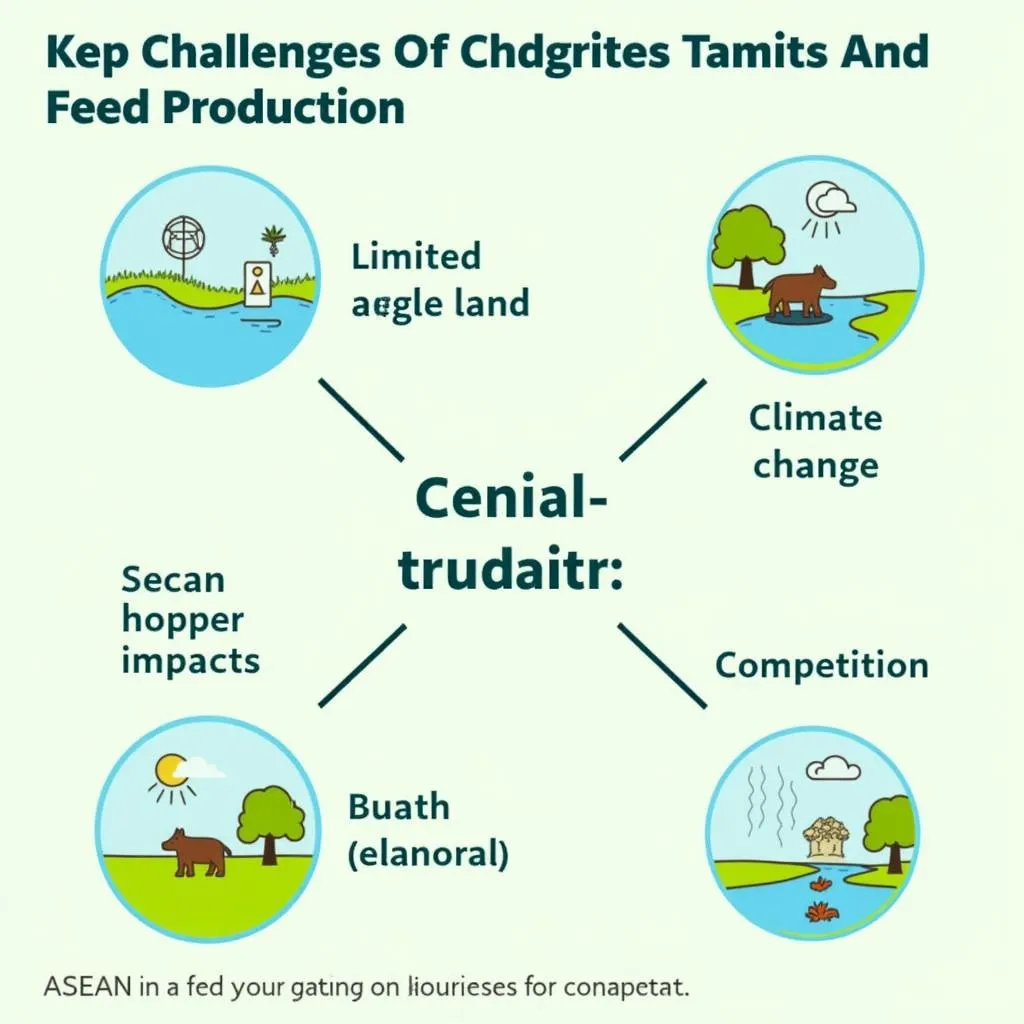The ASEAN region, a vibrant tapestry of diverse cultures and economies, faces a pressing challenge: ensuring food security for its burgeoning population. Central to this challenge is the complex and often overlooked issue of ASEAN feed supply. This intricate network, responsible for nourishing the livestock and aquaculture that grace our tables, is undergoing a period of unprecedented transformation.
 ASEAN Feed Production Challenges
ASEAN Feed Production Challenges
The Stakes are High: Understanding the Importance of ASEAN Feed Supply
The demand for animal protein in Southeast Asia is on an upward trajectory, driven by rising incomes, urbanization, and evolving dietary preferences. This surge in demand places immense pressure on the region’s feed supply chain, which faces a multitude of hurdles, from climate change and resource scarcity to fluctuating commodity prices and evolving trade dynamics.
A secure and sustainable feed supply is not merely an agricultural concern; it is intrinsically linked to economic prosperity, social stability, and environmental sustainability. A disruption in the feed supply chain can ripple through the entire food system, impacting livelihoods, increasing food prices, and exacerbating existing inequalities.
Unpacking the Complexities: Key Factors Shaping ASEAN Feed Supply
Navigating the future of ASEAN feed supply requires a nuanced understanding of the multifaceted factors at play. Here’s a closer look at some of the key drivers shaping this critical sector:
1. The Land Conundrum: Balancing Competing Demands
With limited arable land available, ASEAN nations face a delicate balancing act. The expansion of agricultural land for feed production often comes at the expense of forests and other valuable ecosystems. This competition for land resources underscores the need for sustainable intensification practices that maximize output while minimizing environmental impact.
“In a region grappling with the impacts of climate change, optimizing land use for feed production is not just about efficiency, it’s about resilience,” notes Dr. Nguyen Van Minh, an agricultural economist specializing in Southeast Asian food systems.
2. Climate Change: Navigating an Uncertain Terrain
The impacts of climate change, from extreme weather events to shifting rainfall patterns, pose significant threats to feed crop production in ASEAN. Droughts can decimate harvests, while floods can disrupt transportation networks and storage facilities. Building resilience to these climate shocks is crucial for ensuring a stable and reliable feed supply.
3. The Trade Tapestry: Regional and Global Interdependence
ASEAN countries are heavily reliant on imports to meet their feed demand. This reliance on global markets exposes the region to price volatility and supply chain disruptions. Strengthening regional cooperation and diversifying sourcing options are crucial for mitigating these risks.
 ASEAN Feed Trade Network
ASEAN Feed Trade Network
4. Technological Innovations: A Beacon of Hope
From precision farming techniques to advancements in feed formulation, technology holds immense potential for enhancing the efficiency and sustainability of ASEAN feed supply. Embracing innovation is key to optimizing resource use, reducing environmental impact, and boosting productivity.
Charting a Sustainable Course: Towards a Resilient ASEAN Feed Future
Addressing the challenges and harnessing the opportunities within ASEAN feed supply requires a multi-pronged approach. Here are some key strategies:
- Promoting Sustainable Intensification: Embracing agricultural practices that maximize yields while minimizing environmental impact, such as crop rotation, integrated pest management, and water-efficient irrigation.
- Strengthening Regional Cooperation: Fostering collaboration among ASEAN nations to share best practices, harmonize regulations, and develop regional strategies for feed security.
- Investing in Research and Development: Supporting research into climate-resilient feed crops, innovative feed formulations, and sustainable livestock and aquaculture production systems.
- Empowering Smallholder Farmers: Providing smallholder farmers, the backbone of ASEAN agriculture, with access to training, technology, and financial resources to enhance their resilience and productivity.
Conclusion: A Shared Responsibility for Food Security
The future of food security in ASEAN hinges on our ability to transform the feed supply chain into a resilient and sustainable system. This transformation requires collaborative action from governments, businesses, farmers, and consumers alike. By working together, we can ensure that the ASEAN region continues to thrive, nourished by a secure and sustainable food system.
FAQs about ASEAN Feed Supply
1. What are the main challenges facing ASEAN feed supply?
The main challenges include limited land availability, climate change impacts, reliance on imports, and the need to balance production with environmental sustainability.
2. Why is ASEAN feed supply important for food security?
Feed supply directly impacts the production of livestock and aquaculture, which are essential sources of protein and nutrition for the region’s population.
3. How can technology contribute to a more sustainable feed supply?
Technology can enhance efficiency, reduce waste, and promote sustainable practices in feed production, processing, and distribution.
4. What role do smallholder farmers play in ASEAN feed supply?
Smallholder farmers are crucial actors in feed production, and supporting their livelihoods and empowering them with knowledge and resources is essential.
5. What is being done to address the challenges in ASEAN feed supply?
Regional initiatives, technological advancements, and policy interventions are being implemented to promote sustainable intensification, strengthen regional cooperation, and enhance resilience to climate change.
Need further assistance?
Reach us at:
Phone: +84 369020373
Email: [email protected]
Address: Thon Ngoc Lien, Hiep Hoa, Bac Giang, Vietnam
Our dedicated customer support team is available 24/7 to assist you.
